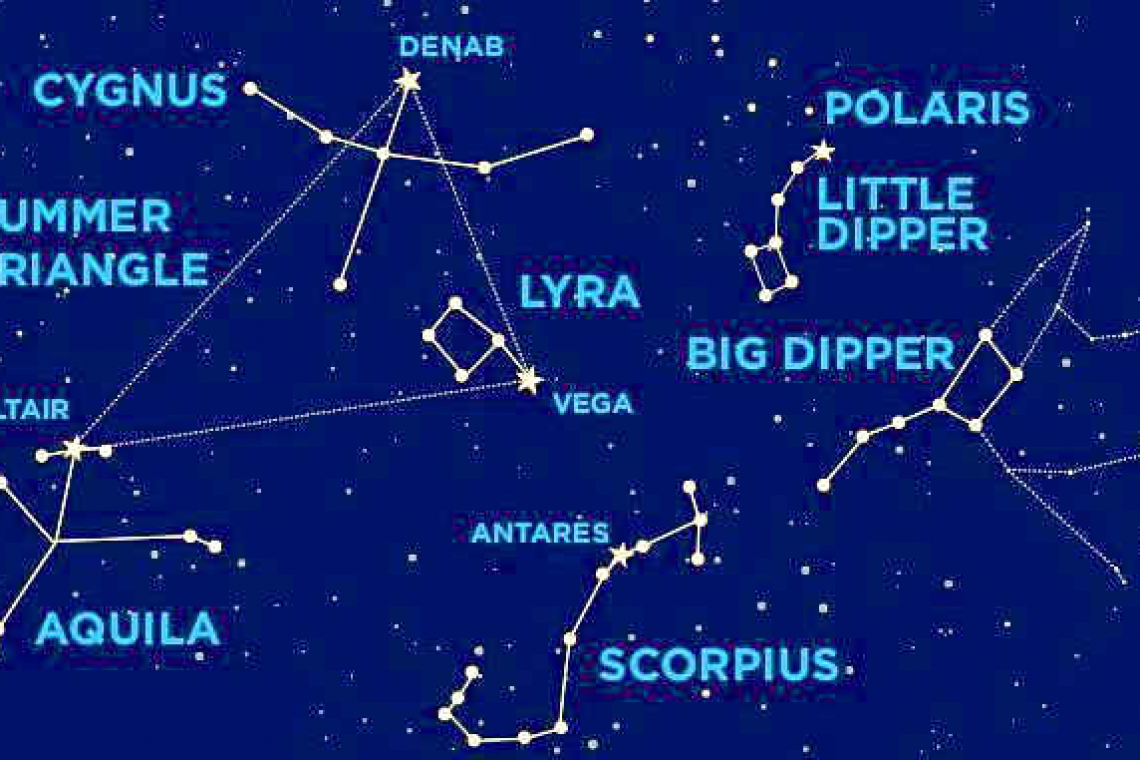~ St. Maarten’s Backyard Astronomy for July 9-11 ~
Sun rises at 5:43am
Sun sets at 6:51pm
Lunar phase: new moon, virtually absent
Moon rises at 6:03am, Saturday
Moon sets at 7:39pm, Saturday
This weekend promises to be optimum viewing time for stars and planets, due primarily to the moon’s near absence. The darkness of the sky will provide a pitch black backdrop upon which the stars will twinkle ever more distinctly. Should the power current to our homes drop off line at some point, no need to curse, take it as your cue to exit the home and enter the great outdoors where the night sky takes centre stage.
Evening hours offer a tremendous event this weekend as Venus and Mars will have a close encounter. Seek out the celestial conjunction after sunset in the west. Our two nearest neighbouring planets will appear between Leo the Lion and Cancer the Crab, along with the new moon on Friday, Saturday and Sunday evenings. By early next week, the conjunction will reach its closest approach, the climactic crescendo arriving Tuesday evening, with Venus and Mars actually overlapping visually in the western sky. By that time, you will be able to detect the thinnest sliver of crescent moon, hanging delicately like a lost eyelash, just above the two planets.
Take the opportunity to use your binoculars or telescope to view each of these entities. Seeing two planets in one lens view is a rare treat, not to be overlooked. Take note, Venus will be outshining Mars by about 200 times, and so you could be forgiven for not noticing Mars at first. Yet these two worlds – the two planets orbiting on either side of Earth around our sun – are both worth noticing.
Keep your scopes handy because a bit later in the night, two more planets will be visible, this time rising in the east. Around 10:00pm, search for Saturn and Jupiter amongst the stars of Capricorn the Goat and Aquarius the Water Bearer.
Other points of interest this weekend include Sagittarius and Scorpio (featured in last weekend’s article) along the southern horizon, as well as the great bird constellations soaring high overhead, Aquila the Eagle and Cygnus the Swan. These two birds team up with Lyra the Harp to form a triangle of bright stars known as the Summer Triangle.
Hercules hits the apex of the sky around 10:30pm and the northern sky offers sweeping views of the Big and Little Dippers as well as Cassiopeia the Queen on her throne.
Thank you for keeping up with the Night Sky articles designed for St. Maarten viewing. If you are out later on in the week, each star rises about four minutes earlier each day than written here, and the moon rises 50 minutes later. Night Sky is researched and compiled by Lisa Davis-Burnett. Earthsky.org is a key resource for information and images. Questions or comments? Email This email address is being protected from spambots. You need JavaScript enabled to view it.







